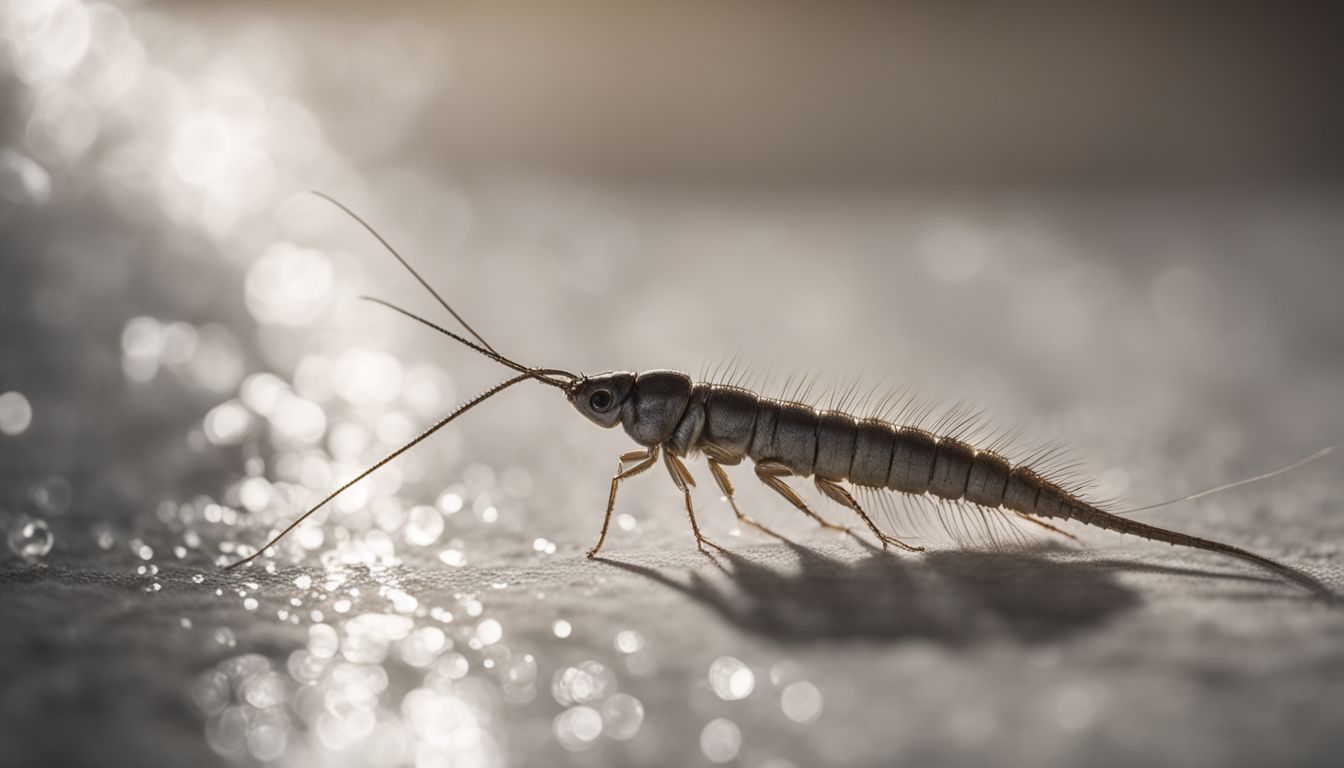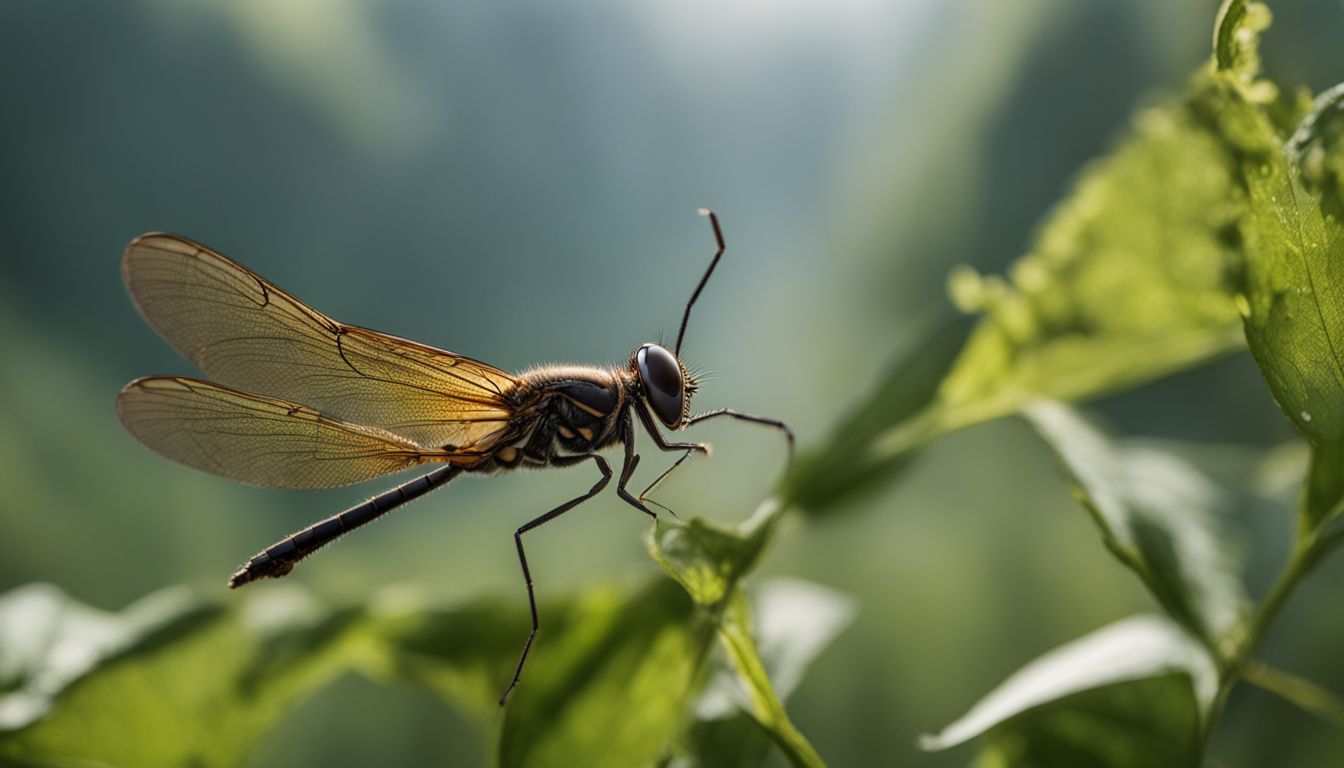“This post contains affiliate links. As an Amazon Associate, I earn from qualifying purchases”
Has your peaceful home ever been invaded by tiny, swift creatures that seem to disappear as quickly as they appeared? You’re not alone. Many homeowners and tenants experience the nuisance of silverfish—those slinky, silvery insects that dart across bathroom floors and hide in old boxes.
These elusive pests are more than just an annoyance; they have fascinating movement abilities that vary among species.
Imagine for a moment there’s such a thing as the Silverfish Olympics—an event showcasing the astonishing agility of these critters. Different types will compete, demonstrating their unique skills in speed, climbing, and even jumping! Our article peels back the curtain on this miniature world of athleticism.
Discover which silverfish might take gold in scuttling speed or vertical leaps—and perhaps learn how to discourage them from making your space their stadium. Ready for some insect action? Let’s dive into the world of silverfish dynamics!
How Silverfish Move

Silverfish are the Houdinis of the insect world—sleek, swift, and masters of maneuvering through your home’s nooks and crannies. With their unique trio of tail bristles and a body that seems to shimmer like quicksilver, they glide across surfaces with surprising speed and agility.
Slender and quick-moving
Silverfish slip through the tiniest cracks with ease. Their slim bodies allow them to race across surfaces unseen, often before a homeowner spots them. With their smooth, sleek scales reflecting light, they might catch your eye as they dash to safety.
These insects are built for speed and agility. Their flexible frames twist and turn swiftly, making them tough targets for pest control efforts.
They use their three long tail bristles to balance and steer while moving quickly over various materials in your home. Whether sprinting up walls or skittering along bookshelves, silverfish can be quite the nuisance pest due to this talent for fast travel.
Stopping these speedy invaders may require sealing up points of entry or contacting pest control professionals who understand how to manage these quick creatures effectively.
Three tail bristles
Silverfish are speedy little critters, and their three tail bristles play a big part in that. These special bristles help them zip around your home with ease. They’re like built-in tools for quick turns and sharp maneuvers.
Think of them as the cool spoilers on a race car but for bugs.
These tails also let silverfish jump when they need to. Imagine being able to leap over stuff without running shoes or a trampoline! With these bristle-enhanced jumps, silverfish dodge trouble or go after what they want super fast.
They use this awesome skill to explore places from basements to crawl spaces, making it look easy as pie.
Silvery scales
Silver scales cover silverfish, giving them a shiny look. These tiny, glittering bits act like armor that helps the bugs zip around without getting stuck. They slip through cracks and dash across walls super fast because of their smooth scales.
They have a special way to shine and move that grabs attention. Now let’s see how different kinds of these speedy critters compare in the race game.
Comparing Movement Among Different Species

3. Comparing Movement Among Different Species: Dive into the realm of these nocturnal acrobats as we spotlight their unique locomotive flair—each species boasts distinct moves that set them apart in the insect world’s version of the Olympics.
Get ready to witness an intricate ballet; where agility meets evolution, and every silver streak is a testament to survival tactics honed over millennia.
Long-Tailed Silverfish (Ctenolepisma longicaudata)
Long-tailed silverfish sprint like champions. They are stars in the movement Olympics among their kin. With a body built for speed, they dart across surfaces with ease, outpacing their close relatives.
Their longer tails help them balance as they make sharp turns and quick getaways.
Watching these critters can offer clues on how to keep them out of your home. Understanding the swift nature of Ctenolepisma longicaudata tells us why sealing up cracks and using airtight containers is so important.
Fast movers need just small openings to slip inside and find meals. So if you spot these speedy insects at home, think about tightening up your defenses and maybe even trying pest control tricks like diatomaceous earth or traps that target their unique movement patterns.
Common Silverfish (Lepisma saccharina)
The Common Silverfish, or Lepisma saccharina, really knows how to move fast! It darts around in quick, zippy motions that are hard to follow. Think of it as a little racer that can climb up almost anything with no trouble at all.
This bug doesn’t jump, but who needs to when you’re that speedy and slick? Its silvery scales help it slip away before you even know it’s there.
Homeowners and tenants might see the Common Silverfish zipping across floors or walls since these bugs love hanging out in our homes. They’re super good at hiding, too, so if you spot one, there might be more around.
With their fast moves and climbing skills, they can check out all kinds of places in your house without being caught!
Firebrats (Thermobia domestica)
Moving from the familiar common silverfish, let’s talk about firebrats. These little creatures love the heat and are found where it’s warm. Think attics on hot days or near your oven.
Unlike their silvery cousins, firebrats have a special trick – they can jump! Any homeowner or tenant might spot them doing their quick leaps around high-heat areas. Keeping an eye out for these spry pests is smart because they’re always looking for warm spots to hang out.
Firebrats move fast and climb well, which means catching them isn’t easy. They zip across surfaces with those three tail bristles waving behind them. If you see one, you’ve probably got more hiding nearby – loving the warmth just as much as that one did.
These bugs want proteins and all kinds of stuff to munch on, which is why they sneak into cozy human homes in the first place!
Conclusion
So, that’s the scoop on silverfish and their Olympic-worthy moves. Different kinds hop, run, and climb in their own cool ways. We learn lots about these quick bugs by watching them go.
This could even help folks keep them out of our homes. And hey, they might just be tiny champions after all!
FAQs
1. What are silverfish and why do they matter?
Silverfish, or fishmoths as some call them, are small insects; they often hang out in damp areas like bathrooms. Understanding how they move helps with pest management.
2. How does studying silverfish movement help with pest control?
Learning about silverfish movement lets us find their favorite spots—like roofs or gutters—and makes using pesticides more effective by targeting where they live.
3. Are all silverfish the same when it comes to moving around?
Nope! Different species, like the long-tailed-silverfish, might move differently. This info guides pest extermination methods so we can pick the best approach.
4. What types of chemicals work against silverfish?
Some tough chemicals like neonicotinoids (think imidacloprid) and neurotoxic ones like fipronil mess up their nicotinic receptors – basically bug poison that works well!
5. Can just any pesticide be used to get rid of these bugs?
Careful now… not all poisons work for every bug! Scientists use bio-assays to test what’s safe and strong against tricky pests such as bed bugs and bacteria or fungi-loving critters like our skittery friends.